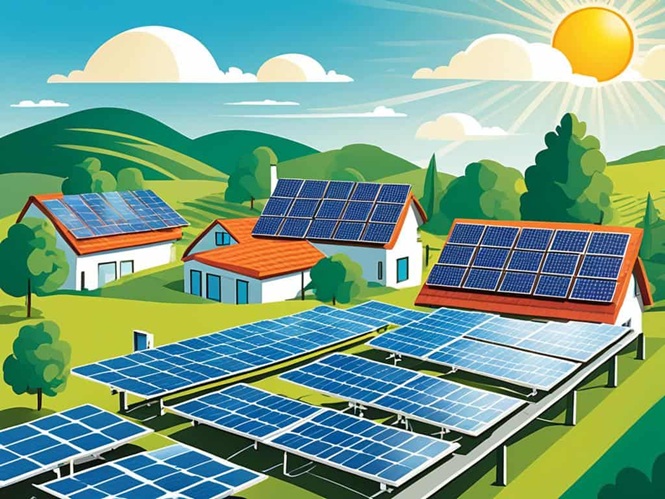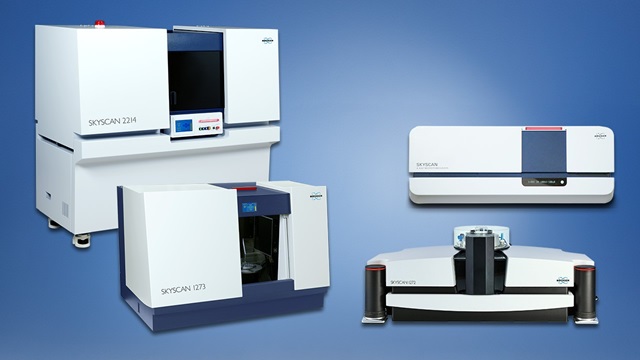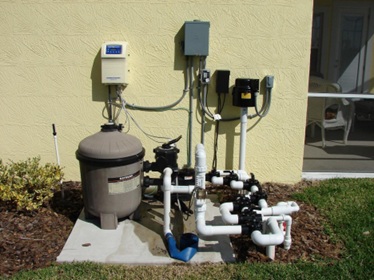
In the age of renewable energy, solar power has become a buzzword synonymous with sustainability and innovation. While most people are familiar with photovoltaic (PV) panels that convert sunlight into electricity, fewer are acquainted with solar thermal energy—a technology that uses the sun’s heat to produce usable energy. This lesser-known system holds immense potential for reducing energy costs and carbon footprints. In this blog, we’ll explore how solar thermal energy works and why it’s a smart investment for homeowners, businesses, and communities.
How Solar Thermal Energy Works
At its core, solar thermal energy harnesses sunlight to generate heat. This is accomplished through three key components: solar collectors, heat transfer systems, and storage units. Here’s a closer look at the process:
Solar Collectors
Solar thermal systems begin with collectors, typically mounted on rooftops or open spaces. These collectors absorb sunlight and convert it into thermal energy. There are three primary types of collectors:
- Flat-Plate Collectors: These are the most common, featuring a flat surface that captures sunlight and transfers the heat to a working fluid.
- Evacuated Tube Collectors: Designed for high efficiency, these consist of rows of glass tubes that minimize heat loss.
- Concentrated Solar Collectors: Using mirrors or lenses, these systems focus sunlight onto a small area to generate intense heat, ideal for industrial applications.
Heat Transfer Systems
Once sunlight is absorbed, the heat is transferred to a working fluid—typically water, glycol, or a similar medium. This heated fluid is circulated through pipes, often regulated by throttle valves, to precisely control the flow and deliver energy where it’s required, such as in water heating systems, space heating, or various industrial processes.
Energy Storage
To maximize utility, excess heat can be stored in insulated tanks for later use. This ensures a steady energy supply even when sunlight is unavailable, such as during nighttime or cloudy days.
Applications of Solar Thermal Energy
Solar thermal energy isn’t just about heating water for your morning shower. It offers versatile applications across residential, commercial, and industrial settings:
- Residential Use: Homeowners can use solar thermal systems for water heating, space heating, and even cooling through absorption chillers.
- Commercial Buildings: Hotels, hospitals, and schools benefit from large-scale systems for heating and hot water needs.
- Industrial Processes: Solar thermal energy is increasingly used in industries like food processing, textiles, and chemicals for processes requiring heat.
- District Heating: Communities can leverage centralized solar thermal plants to distribute heat across multiple buildings.
Why Solar Thermal Energy Is a Smart Investment
Now that we’ve covered how it works, let’s dive into why investing in solar thermal energy makes financial and environmental sense.
1. Significant Cost Savings
By using free and abundant sunlight, solar thermal systems drastically reduce energy bills. While the initial installation may require a substantial investment, the long-term savings often outweigh these upfront costs. Many systems pay for themselves within a few years through reduced reliance on traditional energy sources.
2. Environmental Benefits
Solar thermal energy is a clean, renewable resource that produces zero greenhouse gas emissions during operation. By switching to solar thermal, you’re contributing to a reduction in carbon emissions, helping combat climate change.
3. Energy Independence
Relying on solar thermal energy decreases dependence on fossil fuels and external energy suppliers. This not only provides greater control over energy costs but also enhances energy security, particularly in regions prone to fuel price volatility.
4. Government Incentives and Rebates
Many governments offer financial incentives, tax credits, or rebates to encourage the adoption of solar energy technologies. These programs can significantly reduce the upfront cost of installing a solar thermal system, making it even more attractive.
5. Increased Property Value
Homes and buildings equipped with renewable energy systems are often valued higher in the real estate market. Buyers are increasingly drawn to properties with sustainable features, seeing them as future-proof and cost-efficient.
6. Scalability and Versatility
Solar thermal systems can be scaled to fit any energy requirement, from small residential setups to large industrial systems. This flexibility makes it an ideal solution for diverse energy needs.
Challenges and Considerations
While solar thermal energy has numerous benefits, it’s important to consider potential challenges:
- Initial Costs: Although long-term savings are significant, the upfront cost of installation can be high.
- Space Requirements: Installing solar collectors requires adequate roof or ground space.
- Climate Dependency: Systems are most effective in sunny regions, though advancements in technology are improving efficiency in less ideal conditions.
Is Solar Thermal Right for You?
Deciding whether to invest in solar thermal energy depends on factors such as your location, energy needs, and budget. Consulting with a reputable solar energy provider can help you evaluate your options and design a system tailored to your requirements.
In Conclusion
Solar thermal energy represents a powerful, sustainable solution for heating needs across various applications. By leveraging the sun’s abundant energy, this technology offers significant cost savings, environmental benefits, and energy independence. Although the initial investment may seem daunting, the long-term rewards make it a smart choice for anyone looking to embrace renewable energy.
As the world transitions towards a greener future, solar thermal energy stands out as a key player in the renewable energy landscape. Whether you’re a homeowner, a business owner, or part of a community looking for sustainable solutions, solar thermal energy is worth considering for its practicality, efficiency, and impact on the planet.






